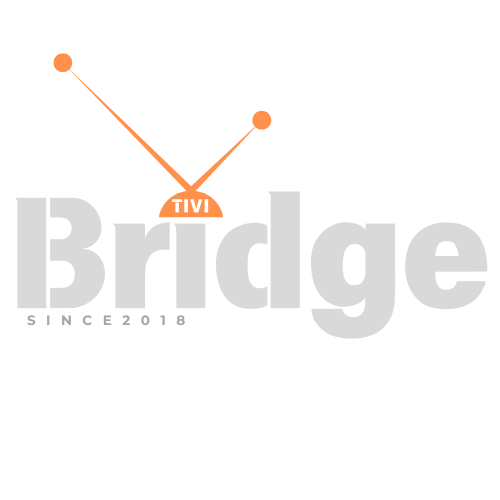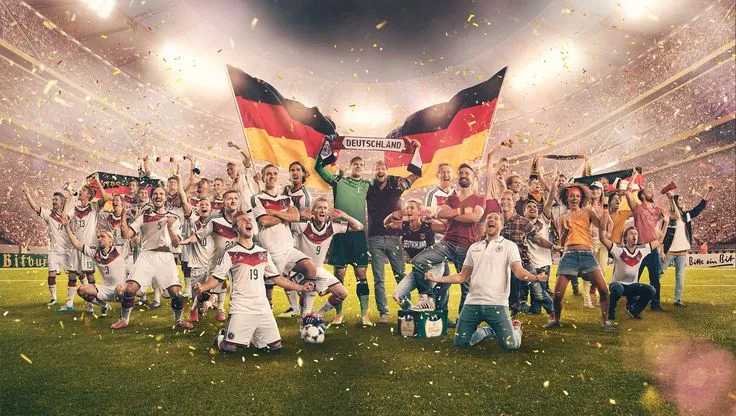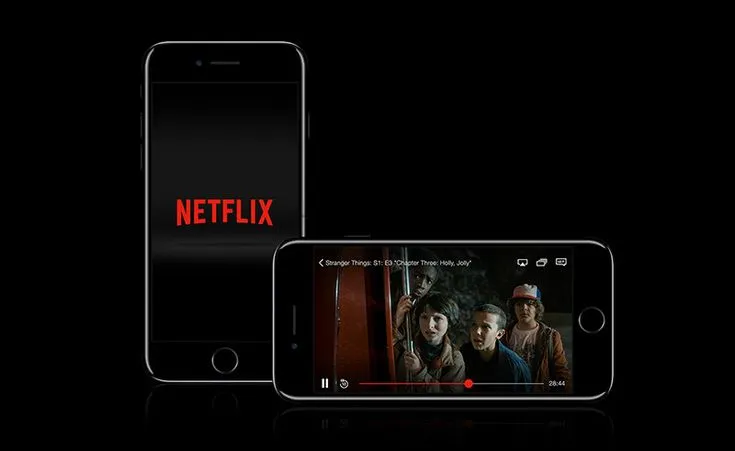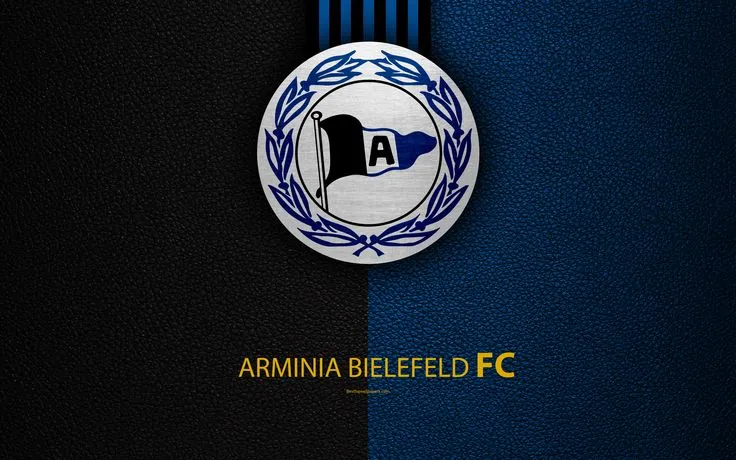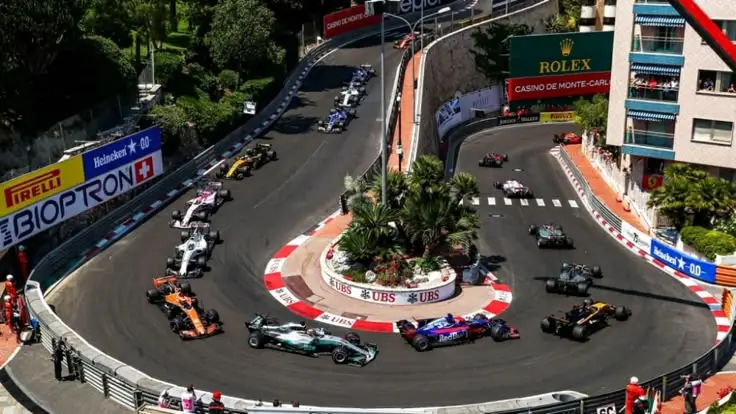F1 Monaco GP Live
F1 Monaco GP Live The roar of Formula 1 engines echoing through the narrow streets of Monte Carlo signals the beginning of one of motorsport’s most prestigious weekends. The Monaco Grand Prix free practice session sets the stage for what many consider the jewel in Formula 1’s crown. As drivers navigate the challenging street circuit for the first time during race weekend, FP1 becomes absolutely crucial for understanding who has the pace to conquer the principality’s unforgiving streets.
This comprehensive guide dives deep into everything you need to know about the Monaco Grand Prix first free practice session, from timing analysis to driver performances, technical insights, and what it all means for the weekend ahead. Whether you’re a seasoned F1 enthusiast or new to the sport, this coverage will provide you with the essential insights that make Monaco’s opening practice session so captivating.
Understanding Monaco’s Unique Challenge
The Circuit That Demands Perfection
The Monaco Grand Prix presents the ultimate test of precision driving in Formula 1. Unlike purpose-built racing circuits, Monaco’s street layout through Monte Carlo creates a scenario where millimeters matter more than anywhere else on the calendar. During the free practice session, drivers must familiarize themselves with barriers that sit mere inches from their wheels at speeds exceeding 180 mph.
The 3.337-kilometer circuit features 19 corners, each presenting its own unique challenge. From the famous Casino Square to the tight hairpin at the Grand Hotel, every section demands absolute concentration. The free practice session becomes vital as drivers attempt to find the perfect balance between speed and safety.
What makes Monaco particularly treacherous is the complete lack of run-off areas. One mistake during the free practice session can result in expensive car damage and valuable track time lost. This reality transforms FP1 from a simple practice session into a high-stakes balancing act where teams must gather crucial data while minimizing risk.
Why FP1 Matters More at Monaco
While free practice sessions at other circuits allow for experimentation and setup changes, Monaco’s FP1 carries extraordinary significance. The limited track time available throughout the weekend means every minute on track becomes precious. Unlike circuits where drivers can push boundaries knowing they have space for error, Monaco demands immediate adaptation.
The narrow streets provide no room for learning curves. Drivers must quickly establish their braking points, acceleration zones, and racing lines during the free practice session. Those who struggle to adapt quickly often find themselves trailing throughout the entire weekend.
Teams approach the Monaco Grand Prix free practice session with meticulous preparation. Simulator work becomes paramount, as drivers spend countless hours preparing for the unique challenges they’ll face. However, nothing truly replicates the sensation of threading an F1 car through Monaco’s streets at racing speeds.
Technical Analysis: Car Setup for Monaco
Aerodynamic Configuration
Monaco’s slow-speed nature requires a completely different aerodynamic approach compared to other circuits on the F1 calendar. During the free practice session, teams experiment with maximum downforce configurations that would be unthinkable at high-speed tracks like Monza or Spa.
The emphasis shifts toward mechanical grip and car handling rather than straight-line speed. Teams often run wing configurations that generate significant drag but provide crucial downforce for navigating Monaco’s tight corners. This balance becomes evident during the free practice session as engineers analyze telemetry data to optimize their setup.
Key aerodynamic considerations during FP1 include:
- Maximum rear wing angle for enhanced traction
- Front wing adjustments for improved turn-in response
- Brake duct cooling optimization for Monaco’s unique demands
- Suspension geometry changes to handle the bumpy street surface
Suspension and Mechanical Setup
The Monaco Grand Prix presents unique mechanical challenges that become apparent during the free practice session. The street circuit’s bumpy surface, combined with elevation changes and kerbs, requires suspension settings that differ dramatically from traditional racing circuits.
Teams must find the perfect balance between mechanical grip and ride comfort. Too stiff, and the car becomes difficult to drive over Monaco’s notorious bumps. Too soft, and the vehicle loses precision in the tight corners that define the circuit.
During FP1, engineers carefully monitor:
- Suspension travel and bottoming frequency
- Tire temperature distribution across all compounds
- Brake temperature management in Monaco’s demanding environment
- Power steering assistance levels for the physically demanding layout
Driver Performances and Standout Moments
Adapting to Monaco’s Demands
The free practice session reveals which drivers possess the special skills required for Monaco success. Unlike other circuits where raw speed often prevails, Monaco rewards precision, patience, and an intimate understanding of the circuit’s rhythm.
Experienced Monaco performers often demonstrate their class during FP1. Drivers like Lewis Hamilton, who has won the Monaco Grand Prix multiple times, typically show immediate comfort with the circuit’s demands. Their onboard cameras reveal smooth inputs and confident positioning that newer drivers struggle to replicate.
The free practice session also provides opportunities for surprising performances. Drivers who might struggle on traditional circuits sometimes find their niche in Monaco’s unique environment. The emphasis on car control and precision can level the playing field in unexpected ways.
Looking for Premium Channels, Sports, and 4K Streaming?
Don’t miss out on these top-rated IPTV services – all at unbeatable prices!
🔥 TiviBridge – Ideal for sports lovers & international content
🎬 Iptvbridge – Perfect for live TV, movies & entertainment
💰 TiviPlanet – Best value for budget-conscious streamers
🚀 Start Your IPTV Business Today!
Get instant access to a powerful Reseller IPTV Panel with competitive pricing, advanced features, and 24/7 support. Join TiviBridge and grow your own IPTV empire with ease!
👉 Start your FREE trial now and elevate your viewing experience with seamless, high-quality streaming!
Rookie Challenges and Learning Curves
For drivers experiencing their first Monaco Grand Prix, the free practice session represents a baptism by fire. The intimidating barriers and narrow racing lines create psychological challenges that extend beyond mere technical driving requirements.
Rookie drivers often approach their first Monaco free practice session with understandable caution. The consequences of mistakes are immediate and expensive, creating pressure that doesn’t exist at other venues. However, this same pressure often produces breakthrough moments when drivers successfully navigate the circuit’s challenges.
Teams typically provide extensive support for drivers experiencing Monaco for the first time. Radio communication during FP1 includes detailed guidance about braking points, racing lines, and areas where mistakes commonly occur.
Weather Impact and Track Evolution
Mediterranean Climate Variables
Monaco’s Mediterranean location creates weather conditions that can dramatically affect the free practice session. While the principality often enjoys favorable weather, the proximity to the sea creates microclimates that can catch teams unprepared.
Coastal humidity affects tire performance during the free practice session. Teams must account for changing grip levels as track temperatures fluctuate throughout FP1. The street circuit’s mix of shaded and sunlit sections creates additional variables that don’t exist on traditional racing circuits.
Wind conditions around Monaco’s harbor can impact aerodynamic performance during the free practice session. Crosswinds through certain corners require setup adjustments that teams identify during FP1 running.
Track Surface Evolution
Unlike permanent racing circuits that maintain consistent surfaces, Monaco’s streets present unique challenges that evolve throughout the free practice session. The street surface, used by regular traffic throughout the year, requires significant cleaning before reaching optimal grip levels.
During FP1, drivers often report improving conditions as rubber is laid down and the track surface cleans up. This evolution continues throughout the weekend, but the free practice session provides the first opportunity to assess how quickly the surface develops.
The famous Monaco track surface includes painted lines, manhole covers, and road markings that create varying grip levels. These elements become particularly challenging during wet practice sessions, requiring drivers to adapt their racing lines continuously.
Timing Analysis and Competitive Order
Understanding Monaco Timing
Lap times during the Monaco Grand Prix free practice session provide crucial insights into competitive order, but interpreting these times requires understanding Monaco’s unique characteristics. Unlike other circuits where raw lap times directly correlate to race performance, Monaco’s qualifying format means FP1 times primarily indicate each team’s comfort level with the circuit.
The narrow track and limited overtaking opportunities make qualifying position absolutely crucial at Monaco. Therefore, teams often use the free practice session to build confidence rather than chase ultimate lap times. This approach can make FP1 timing sheets somewhat misleading for predicting weekend competitiveness.
Sector analysis becomes particularly valuable during the Monaco free practice session. Different sections of the circuit favor different car characteristics, and understanding where teams gain or lose time provides insights into their overall package strength.
Competitive Trends and Patterns
Historical analysis of Monaco free practice sessions reveals interesting patterns about competitive order. Teams that excel in slow-speed corners often show well during FP1, while those dependent on straight-line speed may struggle to demonstrate their true pace.
The free practice session typically sees closer lap times than at most other circuits. Monaco’s nature as an equalizer means that setup and driver skill can overcome pure car performance advantages that might be decisive elsewhere.
Teams with strong mechanical grip packages often emerge as FP1 leaders, though this doesn’t always translate to race weekend success. The unique demands of Monaco qualifying and the race itself can shuffle the competitive order significantly from what FP1 suggests.
Strategic Implications for Race Weekend
Practice Session Strategy
Teams approach the Monaco Grand Prix free practice session with carefully planned strategies that differ significantly from other race weekends. The limited track time and high risk of damage create strategic considerations that don’t exist at permanent racing facilities.
Most teams prioritize system checks and basic setup verification during early FP1 running. The goal is ensuring all car systems function properly in Monaco’s unique environment before attempting any performance optimization. This conservative approach protects against costly mistakes that could compromise the entire weekend.
As the free practice session progresses, teams gradually increase their ambition level. Drivers begin exploring the circuit’s limits while engineers gather data about tire performance, brake temperatures, and aerodynamic efficiency in Monaco’s specific conditions.
Data Collection Priorities
The Monaco free practice session provides teams with their only opportunity to gather real-world data about their car’s performance on the street circuit. Simulator preparation can only provide so much insight, making FP1 data collection absolutely crucial for weekend success.
Teams focus on several key data collection areas during the free practice session:
- Tire degradation patterns across all available compounds
- Brake cooling requirements for Monaco’s demanding stops
- Fuel consumption rates at Monaco’s unique engine mapping requirements
- Suspension behavior over the circuit’s varied surface conditions
This data forms the foundation for setup decisions that will impact qualifying and race performance. Teams that effectively utilize their free practice session time often demonstrate advantages throughout the weekend.
Fan Experience and Viewing Guide
Best Viewing Locations
The Monaco Grand Prix offers unique spectator experiences that begin during the free practice session. Unlike purpose-built circuits with designated grandstands, Monaco’s street layout provides numerous viewing opportunities throughout the principality.
Popular FP1 viewing locations include:
- Casino Square: Offers excellent views of cars navigating the famous S-curves
- Harbour Chicane: Provides close-up action as drivers brake hard before the tight sequence
- Swimming Pool Section: Features multiple viewing angles and dramatic elevation changes
- Rascasse Corner: Allows fans to witness the precision required for Monaco’s tightest turn
Each location offers different perspectives on the challenges drivers face during the free practice session. The proximity to the action creates an atmosphere unmatched in motorsport.
Television Coverage Insights
Broadcasting the Monaco free practice session presents unique challenges and opportunities for television production. The narrow streets and numerous elevation changes create dramatic camera angles impossible at traditional circuits.
Key broadcast elements during FP1 include:
- Onboard cameras showcasing the claustrophobic nature of Monaco driving
- Trackside shots demonstrating the proximity of barriers to racing lines
- Aerial footage revealing the circuit’s integration into Monte Carlo’s urban environment
- Driver radio communications highlighting the mental challenges of the circuit
The free practice session coverage often includes extensive background features about Monaco’s history and the unique challenges drivers face. This context helps viewers appreciate the skill required to navigate the principality at racing speeds.
Technology and Innovation Spotlight
Advanced Telemetry at Monaco
The Monaco Grand Prix free practice session showcases cutting-edge telemetry technology that helps teams optimize performance on the street circuit. Real-time data streaming allows engineers to monitor every aspect of car performance as drivers navigate the challenging layout.
Modern F1 telemetry systems capture hundreds of data points per second during the free practice session. This information includes steering angles, brake pressures, throttle positions, and suspension movements that help engineers understand how their cars respond to Monaco’s unique demands.
The narrow confines of Monaco create challenges for telemetry transmission that don’t exist at other circuits. Teams must ensure reliable data connections despite the urban environment’s potential interference sources.
Simulation Technology Integration
Teams increasingly rely on advanced simulation technology to prepare for the Monaco Grand Prix, but the free practice session remains crucial for validating virtual predictions. The complex interaction between car setup and Monaco’s street surface can only be fully understood through real-world testing.
Driver-in-the-loop simulators help prepare for Monaco’s challenges, but FP1 provides the reality check that determines weekend competitiveness. Teams use practice session data to refine their simulation models for future Monaco visits.
The integration of simulation data with real-world FP1 results creates a comprehensive understanding of car performance that guides strategic decisions throughout the weekend.
Historical Context and Memorable Moments
Legendary FP1 Performances
The Monaco Grand Prix has produced numerous memorable free practice session moments throughout its illustrious history. These sessions often provide the first hints of weekend drama and occasionally witness historic performances.
Veteran drivers often use the free practice session to demonstrate their Monaco mastery. Multiple world champions have produced stunning FP1 laps that announce their intentions for the weekend ahead. These performances become part of Monaco’s rich motorsport folklore.
Weather-affected practice sessions have created some of Monaco’s most memorable moments. Wet FP1 sessions test driver skill to the absolute limit, often producing surprising results that reshape weekend expectations.
Evolution of Monaco Practice
The format and importance of Monaco’s free practice session have evolved significantly throughout Formula 1 history. Early Monaco races featured minimal practice time, making drivers’ first encounters with the circuit during actual racing even more dramatic.
Modern FP1 sessions provide structured opportunities for teams to prepare systematically for Monaco’s challenges. This evolution has improved safety while maintaining the essential character that makes Monaco special.
The introduction of modern safety standards and improved car design has allowed drivers to push harder during free practice sessions. However, Monaco’s fundamental challenge of precision driving remains unchanged.
Technical Regulations Impact
2024 Regulation Effects
Current Formula 1 technical regulations create specific challenges for the Monaco Grand Prix that become evident during the free practice session. The larger, heavier cars mandated by modern rules make Monaco’s narrow streets even more challenging to navigate.
Ground effect aerodynamics, reintroduced in recent seasons, behave differently on Monaco’s bumpy street surface compared to smooth racing circuits. Teams use the free practice session to understand how these aerodynamic concepts perform in Monaco’s unique environment.
The increased car dimensions affect racing lines and overtaking opportunities, making the free practice session even more crucial for finding optimal track positioning. Every millimeter of track width becomes precious when threading modern F1 cars through Monaco’s streets.
Safety Considerations
Modern safety standards have transformed how teams approach the Monaco free practice session. Advanced crash structures and improved medical facilities provide better protection, but the fundamental risks of Monaco remain unchanged.
The free practice session includes extensive safety briefings and marshal preparations specific to street circuit racing. Monaco’s unique layout requires specialized safety procedures that differ from traditional racing facilities.
Teams balance performance objectives with safety considerations throughout FP1. The narrow margins for error at Monaco make risk assessment a crucial element of practice session strategy.
Media and Coverage Evolution
Digital Age Broadcasting
Modern coverage of the Monaco Grand Prix free practice session incorporates cutting-edge broadcast technology that brings viewers closer to the action than ever before. High-definition cameras positioned throughout the circuit provide multiple perspectives on the drivers’ challenges.
Social media integration allows real-time fan engagement during FP1, creating interactive experiences that extend beyond traditional television coverage. Live timing data and telemetry information provide enthusiasts with detailed insights into practice session developments.
Streaming platforms have expanded access to Monaco practice sessions, allowing global audiences to experience the unique atmosphere of F1 cars navigating Monte Carlo’s streets.
International Appeal
The Monaco Grand Prix free practice session attracts global media attention that extends far beyond traditional motorsport coverage. The principality’s glamorous reputation and the circuit’s unique challenges create compelling storylines for international audiences.
Coverage often includes extensive background features about Monaco’s history, culture, and the celebrities who attend the race weekend. This context helps explain why the free practice session generates excitement levels typically reserved for actual races.
The international media presence during FP1 creates additional pressure and attention that drivers must navigate alongside the technical challenges of the circuit itself.
Frequently Asked Questions
What makes the Monaco Grand Prix free practice session different from other F1 practice sessions?
The Monaco free practice session is unique due to the street circuit’s unforgiving nature and limited run-off areas. Unlike purpose-built racing tracks, Monaco offers no room for error, making every practice lap potentially costly. The session becomes crucial for drivers to familiarize themselves with barriers positioned inches from their wheels while traveling at high speeds.
How do teams prepare differently for Monaco’s FP1 compared to other circuits?
Teams invest heavily in simulator preparation before the Monaco free practice session, as the unique street layout cannot be replicated elsewhere. They focus on maximum downforce aerodynamic packages and specialized suspension setups to handle the bumpy street surface. The emphasis shifts from raw speed to precision and mechanical grip optimization.
Why is track time so valuable during Monaco’s free practice session?
Monaco’s limited practice schedule and high crash risk make every minute of FP1 precious. The narrow streets provide no learning curve opportunities – drivers must adapt immediately or risk expensive mistakes. Teams cannot afford to waste practice time, as limited track access throughout the weekend makes data collection during FP1 absolutely essential.
How does weather affect the Monaco free practice session?
Monaco’s Mediterranean coastal location creates variable weather conditions that significantly impact FP1. Humidity affects tire performance, while wind conditions around the harbor influence aerodynamic behavior. The mix of shaded and sunlit track sections creates grip variations that teams must account for during practice running.
What should first-time viewers look for during Monaco’s FP1?
New viewers should focus on the incredible precision required as drivers navigate between barriers with minimal clearance. Watch for different racing lines through corners like Casino Square and the Swimming Pool complex. Pay attention to how drivers build confidence throughout the session and notice the stark difference in approach between Monaco veterans and newcomers.
How do modern F1 cars handle Monaco compared to previous generations?
Current F1 cars are larger and heavier than previous generations, making Monaco’s streets even more challenging to navigate. Ground effect aerodynamics behave differently on the bumpy street surface, requiring teams to use FP1 to understand these effects. The increased dimensions affect racing lines and make precise positioning even more critical during practice sessions.
Conclusion: The Foundation of Monaco Magic
The Monaco Grand Prix free practice session represents far more than a simple preparation period – it’s the foundation upon which one of motorsport’s most prestigious weekends is built. As drivers thread their Formula 1 machines through Monte Carlo’s unforgiving streets during FP1, they begin writing the opening chapter of stories that will captivate racing fans worldwide.
This crucial practice session reveals which teams have successfully adapted to Monaco’s unique demands and which drivers possess the special skills required to excel on the principality’s challenging street circuit. From aerodynamic optimization to psychological preparation, every aspect of Formula 1 competition faces its ultimate test during these vital practice hours.
The evolution of technology, safety standards, and competitive intensity has transformed how teams approach the Monaco free practice session, but the fundamental challenge remains unchanged. Precision, confidence, and respect for the circuit’s unforgiving nature continue to separate success from disaster in the narrow streets of Monte Carlo.
Whether you’re watching your first Monaco practice session or you’re a seasoned enthusiast, FP1 provides the essential foundation for understanding what makes this race weekend truly special. The combination of speed, precision, and consequence creates a spectacle unmatched in modern motorsport.
As the checkered flag waves to conclude another Monaco free practice session, teams and drivers carry forward the lessons learned through these precious practice hours. The data gathered, confidence built, and challenges identified during FP1 will influence every subsequent session throughout this most demanding of race weekends.
Ready to dive deeper into Formula 1’s most glamorous race weekend? Share your thoughts on what makes Monaco’s free practice session so compelling, and don’t miss our comprehensive coverage of qualifying and race day action. Follow our continuing Monaco Grand Prix analysis and join the conversation about motorsport’s ultimate street circuit challenge.
